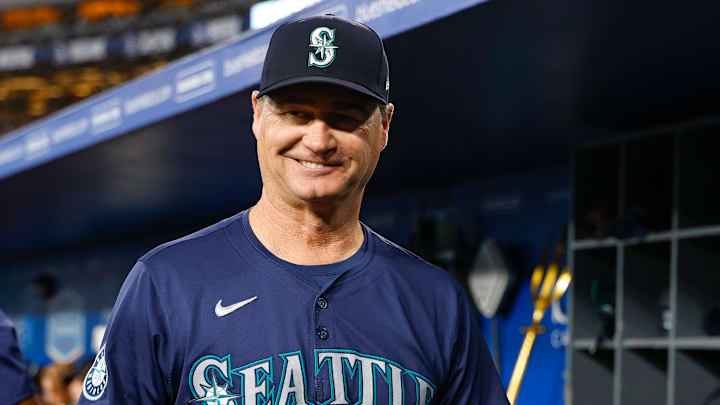There’s a natural instinct, when a marquee job opens in San Diego, to zoom straight to the celebrity names and splashy rumors. But the Padres don’t actually need a headline — they need a fit. They need someone who can drop into a complex roster with Cy Young-level pitching, star-level expectations, and then turn all of that into everyday rhythm and postseason resiliency. That’s why the most sensible move may also be the quietest one: looking inward at a candidate who already knows the building, has managed high-leverage baseball for nearly a decade, and has the scars (and wins) to prove he can steer through noise.
That brings us to Scott Servais. Hired as a special assistant for player development in January 2025, Servais has spent the year inside the Padres’ walls. He arrives with credibility that isn’t theoretical. In Seattle, he engineered a culture shift that broke a 21-year playoff drought in 2022, posted a 680–624 record, and became the second-winningest manager in Mariners history behind Lou Piniella. That résumé becomes even more compelling when you consider the context: a mid-market roster, budget guardrails, and an annual tightrope between developing youth and chasing October. Servais did more with less, which should force an honest question in San Diego: what might he do with more?
Padres should consider Scott Servais after a season inside their building
The “internal candidate” label here isn’t just HR jargon. Servais has been embedded with the Padres throughout 2025 as a special assistant, giving him a running start on relationships with players, staff, and player-dev leadership. He’s not guessing at the clubhouse dynamics or learning the pitching plans from scratch. He’s observed the cadence of this specific group — how it prepares, how it slumps, how it surges, and that continuity matters for a team built to win now. Instead of a months-long feeling-out period, the Padres could start spring with a manager who already understands where the friction points live and how to smooth them.
There’s also the fit with A.J. Preller. Servais and Preller share Rangers roots, which isn’t about nostalgia as much as shared vocabulary. Roster construction in San Diego is fluid by design; Preller pushes edges, tests depth, and is unafraid of midstream recalibration. Servais’ Mariners years, juggling kids arriving from the farm with veterans on tight timelines, and various big trades, mirror the kind of balancing act the Padres perform annually. He’s used to aligning front-office strategy with dugout execution, translating analytics into on-field habits, and holding a room together when the schedule gets loud.
Critics will point to the single postseason berth and his 2024 dismissal in Seattle. But even that note strengthens his candidacy in San Diego. Servais was widely viewed as a fall guy for limitations that stretched beyond the manager’s office — offensive star power that arrived late, payroll levers that were pulled carefully, and narrow margins in a division that punished any dry spell. The Padres, by contrast, offer an elite-talent “playground” with higher ceilings and broader levers. Give a manager who consistently squeezed value from constraints a deeper lineup, an aggressive front office, and a win-now mandate, and you’re betting on a ceiling he hasn’t been allowed to hit yet.
If the Padres truly want a steady hand with immediate traction, Servais checks the right boxes: recent in-house experience, a proven track record of culture-building, and the credibility of breaking baseball’s longest active playoff drought at the time.
He’s not the flashiest name, but he might be the most efficient solution, one that converts San Diego’s “why not us?” talent into “this is us” identity. In a search that could sprawl, the smartest pivot may be the one that keeps the circle tight and the standard high. Servais isn’t just a safe choice; he’s a winning bet that aligns with how the Padres already operate and where they want to go next.
